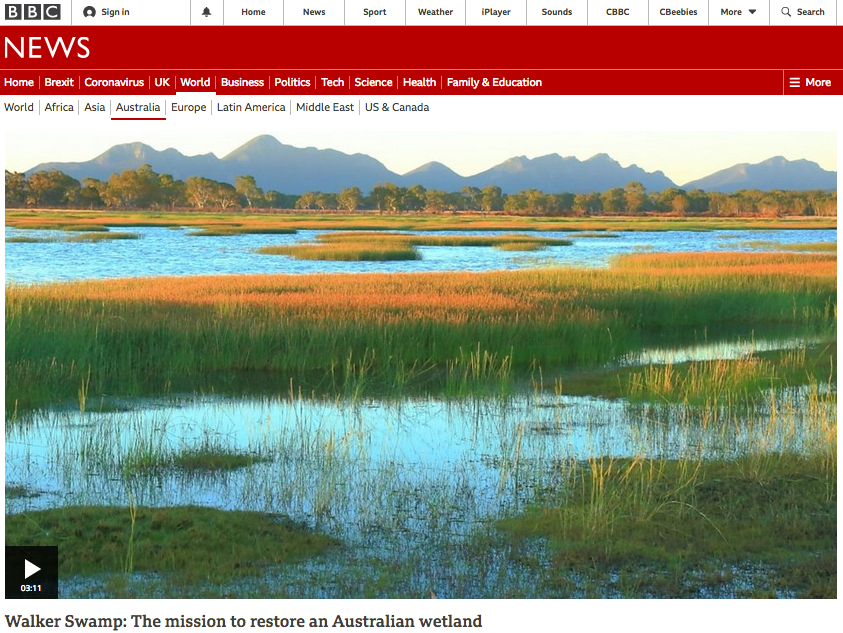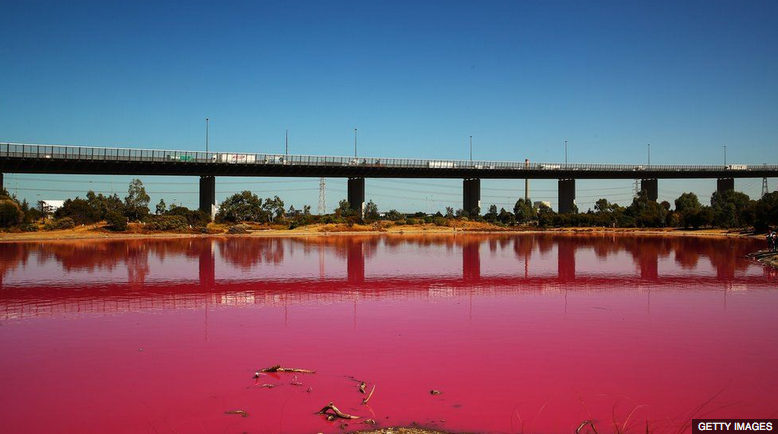From time to time, wetlands in drylands are featured in the media. Here is a selection of articles that have come to our attention in the last few years.
—————
In late February 2021, the BBC reported on restoration efforts at Walker Swamp in Victoria, southeast Australia. Located in a dry subhumid setting in the shadow of Australia’s Grampians National Park, Walker Swamp was “a once-thriving wetland that was artificially drained and farmed for over a century”.
https://www.bbc.co.uk/news/av/world-australia-56151304
 The wetlands appear to have been successfully restored through a project coordinated by the Glenelg Nature Trust. Photographs and data on the changing water levels and ecological condition are provided at:
The wetlands appear to have been successfully restored through a project coordinated by the Glenelg Nature Trust. Photographs and data on the changing water levels and ecological condition are provided at:
https://natureglenelg.org.au/current%20projects/walker-swamp-victoria/
Lachlan Farrington’s report from 30th November 2020 (see https://natureglenelg.org.au/in-la-nina-when-it-rains-it-pours/) concludes positively:
“While there is a lot happening in our environment that we can’t control, wetland restoration is one space where we can buck the trend and sow stories of hope for some of our threatened flora and fauna.”
—————
In late June 2020, The Guardian reported on the purchase of private land in the northwest of the Australian state of New South Wales, which will form the basis for a new national park:
Located close to the existing Sturt National Park and adjoining the Pindera Downs Aboriginal area, the purchase includes parts of the floodplain of the Bulloo River and ‘ephemeral wetlands and landscapes’ not included elsewhere across the state’s national parks. The new national park has yet to be named but will help to conserve wetlands that provide habitats for waterbirds and threatened species.
—————
In late March 2019, the BBC (UK) website had two short articles highlighting the fact that a lake in Westgate Park in Melbourne, Australia, had turned bright pink:
https://www.bbc.co.uk/news/world-australia-39202350
https://www.bbc.co.uk/news/world-australia-47742473

The temporary phenomenon is natural, and also occurs in a number of other lakes, both in Australia and farther afield (e.g. Spain, Senegal, Canada). In the case of Westgate Park in Melbourne, the colouration has resulted from a combination of sunlight, warm temperatures and low rainfall that has promoted the growth of a harmless, single-cell alga known as Dunalliela. With cooler, wetter weather, the lake will eventually return to its more usual blue colour.
—————
In April 2018, The Guardian newspaper (UK) released an interactive article that undertakes a 3000 km journey along the rivers of the Murray-Darling catchment, Australia, to understand why the AUS$13 billion basin plan, intended to recover water diverted to irrigation and restore environmental flows, has been seen as a failure by those people living and working on this land.
Wetlands in drylands are mentioned and illustrated throughout, with the opening paragraphs stating that: “The river system … waters important wetlands that provide shelter and breeding grounds to migratory birds and native fish. And, for tens of thousands of years, the rivers have provided spiritual and physical sustenance to Indigenous people who live along their banks …. Yet our great river system is under stress. The Murray-Darling basin plan was introduced in 2012 to tilt the balance back towards the environment …. Five years in, our leading scientists say the plan is failing to restore the rivers’ health.”
—————
Here’s a BBC News article from November 2016 that received little attention at the time but has obvious relevance: ‘Seasonal wetlands face uncertain future’.
The article is based on a short article by Dalu and others that was published in Global Change Biology (2017, v. 23, pp.983-985, doi: 10.1111/gcb.13549) and makes the point – familiar to many of us – that ephemeral wetlands with their important ecological habitats and ecosystems are under increasing pressure from a combination of agricultural land-use practices and climatic changes such as more frequent and/or prolonged drought. Although most closely associated with drylands, ephemeral wetlands are more widespread than generally realised but many remain unmapped and unstudied.
The authors make the point that the loss of the loss of these relatively small, ephemeral wetlands – assuming that they are even detected and recognized – is often perceived as a small price to pay for the benefits expected from practices that degrade these environments. Private landowners commonly cultivate, drain, dam or excavate wetlands within their properties due to the perceptions of higher financial or agricultural benefits. Damming or excavation, for instance, effectively converts naturally ephemeral wetlands with their high faunal species diversity and distinct taxa to a highly modified, permanent ecosystem with lower faunal species diversity that may be dominated by invasive taxa (e.g. predacious aquatic organisms such as fish and crayfish that cannot survive in ephemeral wetlands).
The authors suggest that wetland conservation programmes can focus on: i) priority mapping and registering of ephemeral wetlands; ii) legislation for safeguarding that no drainage or damming occurs if more important environmental management requirements supersede; and iii) landowner education regarding conservation and land-use practices in key areas where ephemeral wetlands are features of the landscape and/or important in terms of biodiversity.
—————
With a strong El Niño event affecting many drylands globally over the last couple of years, interest in changing land surface conditions has been high. Relevant written articles from Jan 2016 include coverage of two contrasting situations:
1) Heavy rains that are starting to fill Australia’s vast Kati Thanda-Lake Eyre:
http://www.bbc.com/news/world-australia-35203730
2) Bolivia’s second largest lake that is drying up and may disappear:
Meanwhile, two consecutive poor monsoon seasons have led to severe drought in India. The government-led Inter Linking of Rivers (ILR) scheme has numerous links planned for water transfer from surplus to deficit areas but critics say no scientific study has been done, and that the project is not viable financially, environmentally or socially:
http://www.bbc.co.uk/news/world-asia-india-36299778
There’s no explicit mention of wetlands in this article from May 2016, but the story is a familiar one, and the implications for India’s riparian habitats and wetlands will be clear.
